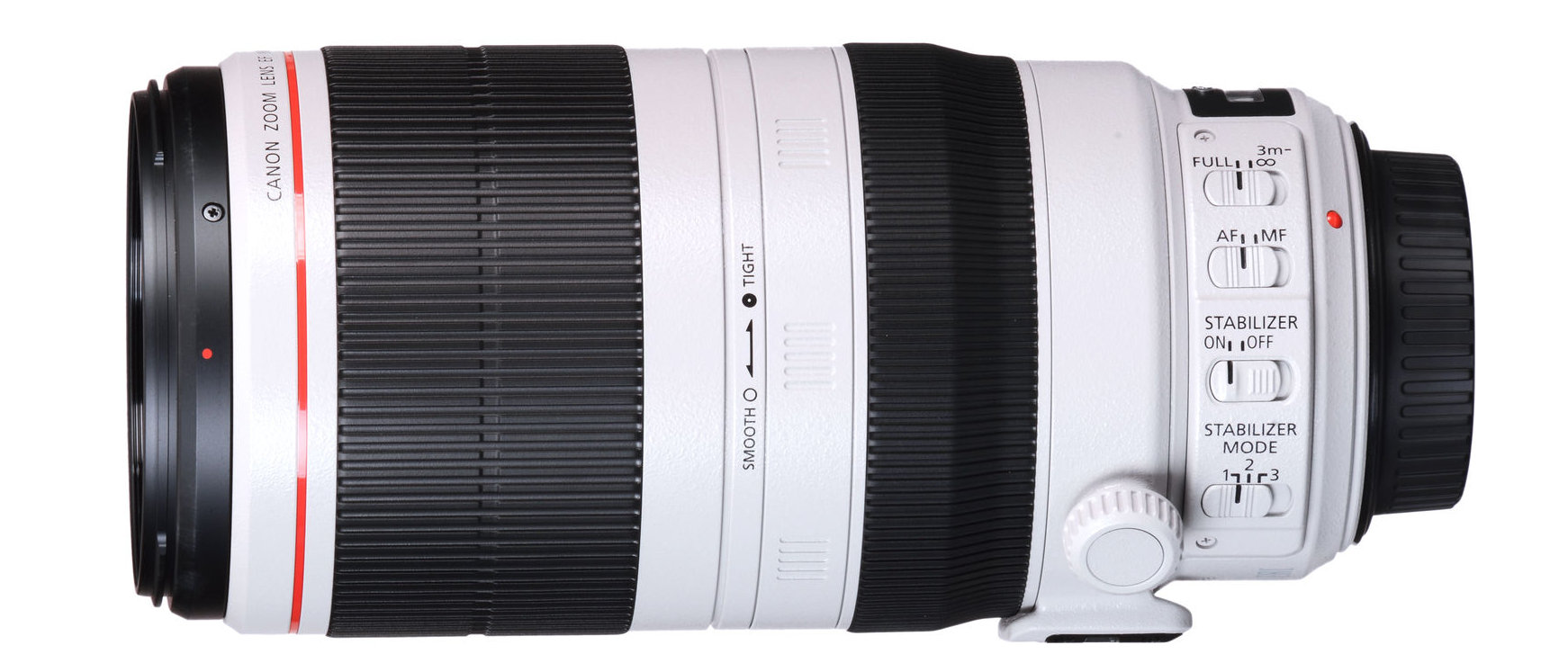Digital Camera World Verdict
The Mark II edition of Canon’s classic 100-400mm IS USM lens is an ideal choice for sports, action and wildlife photography. It ditches the dubious trombone-style push/pull zoom mechanism of the original lens, replacing it with a more conventional twist-action control ring, while retaining and an adjustable friction damper. The optical design and the autofocus and image stabilization systems are all updated and uprated, making the Mark II a solid, pro-grade performer for the digital era. It’s a really nice lens but very pricey compared to the more consumer-focus Sigma and Tamron 100-400mm alternatives.
Pros
- +
Powerful telephoto zoom range
- +
3-mode, 4-stop image stabilization
- +
Great handling and build quality
Cons
- -
Very expensive to buy
- -
Quite weighty
Why you can trust Digital Camera World
The Canon EF 100-400mm f/4.5-5.6L IS II USM replaces the original 100-400mm IS USM, which was launched all the way back in 1998, with film cameras firmly in mind. The first version continued to be highly desirable with the advent of digital SLRs, both for full-frame and APS-C format bodies, having an effective zoom range of 160-640mm on the latter. Less popular was its trombone-style, push-pull zoom mechanism. That’s been changed to a more regular twist-action zoom ring in the Mark II, which was launched in 2014. Typical of most recent Canon L-series lenses, build quality was also improved to incorporate weather-seals.
Specifications
Mount: Canon EF
Lens construction: 12 elements in 16 groups
Angle of view: 24-6 degrees
Diaphragm blades: 9
Minimum aperture: f/32-38
Minimum focusing distance: 0.98m
Maximum magnification ratio: 0.31x
Filter size: 77mm
Dimensions: 94x193mm
Weight: 1,640g
Key features
For sport, action and wildlife photography, fast autofocus is a must. As such, the lens features a typically rapid ring-type ultrasonic system which is both super-quick and whisper-quiet.
Although the Mark II features a twist-action zoom ring, omitted in the original ‘trombone’ lens, it retains its forebear’s adjustable friction damper. This can be particularly useful for avoiding zoom creep when using a tripod or monopod. As usual with super-tele lenses, this one comes complete with a tripod mounting ring and, in this case, it can be completely removed without needing to detach the lens from the camera.
The optical path includes top-grade fluorite and Super UD (Ultra-low Dispersion) glass, and is more sophisticated than in the original lens, with four additional elements. As with Canon’s latest 70-200mm f/2.8L IS III USM lens, a high-tech ASC (Air Sphere Coating) is featured to combat ghosting and flare, plus fluorine coatings on both the front and rear elements to repel moisture and greasy fingermarks.
Another neat feature is the triple-mode image stabilizer. As well as the more usual switchable static and panning options, the third mode applies stabilization only during actual exposures. The viewfinder image is therefore unaffected, making it easier to track erratically moving objects. The stabilizer is rated at 4-stops, compared with just 1.5-stops in the original lens.
Performance
As billed, autofocus is very fast and retains particularly good tracking performance even under very dull lighting conditions. Sharpness and contrast are impressive at short to mid-zoom settings, but there’s a noticeable drop-off at the long end, and it’s outclassed by the newer Canon RF 100-500mm f/4.5-7.1L IS USM lens for EOS R-series cameras at all focal lengths. Color fringing is also noticeable at the short end.
Lab results
We run a range of lab tests under controlled conditions, using the Imatest Master testing suite. Photos of test charts are taken across the range of apertures and zooms (where available), then analyzed for sharpness, distortion and chromatic aberrations.
We use Imatest SFR (spatial frequency response) charts and analysis software to plot lens resolution at the center of the image frame, corners and mid-point distances, across the range of aperture settings and, with zoom lenses, at four different focal lengths. The tests also measure distortion and color fringing (chromatic aberration).
Sharpness:
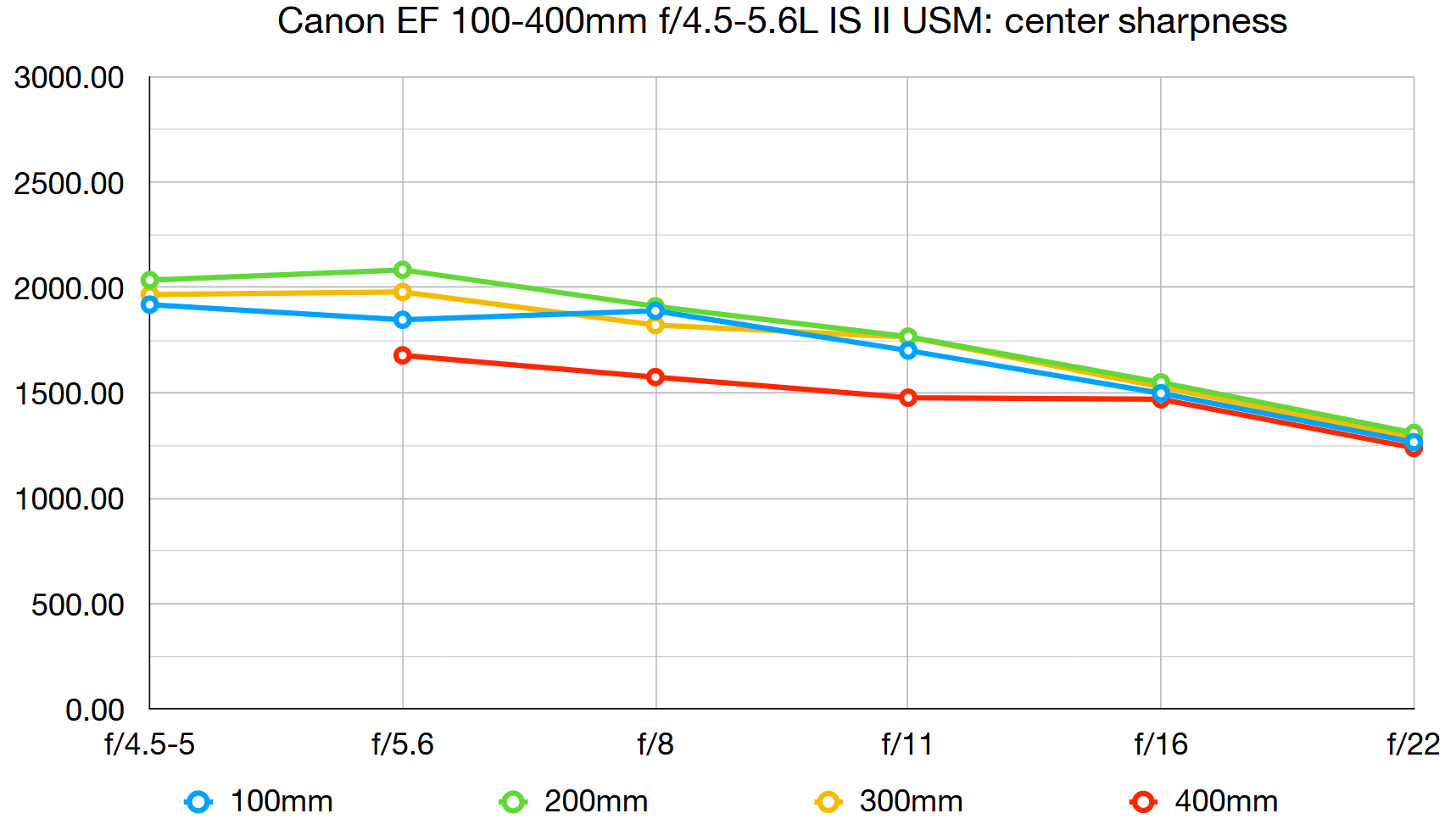
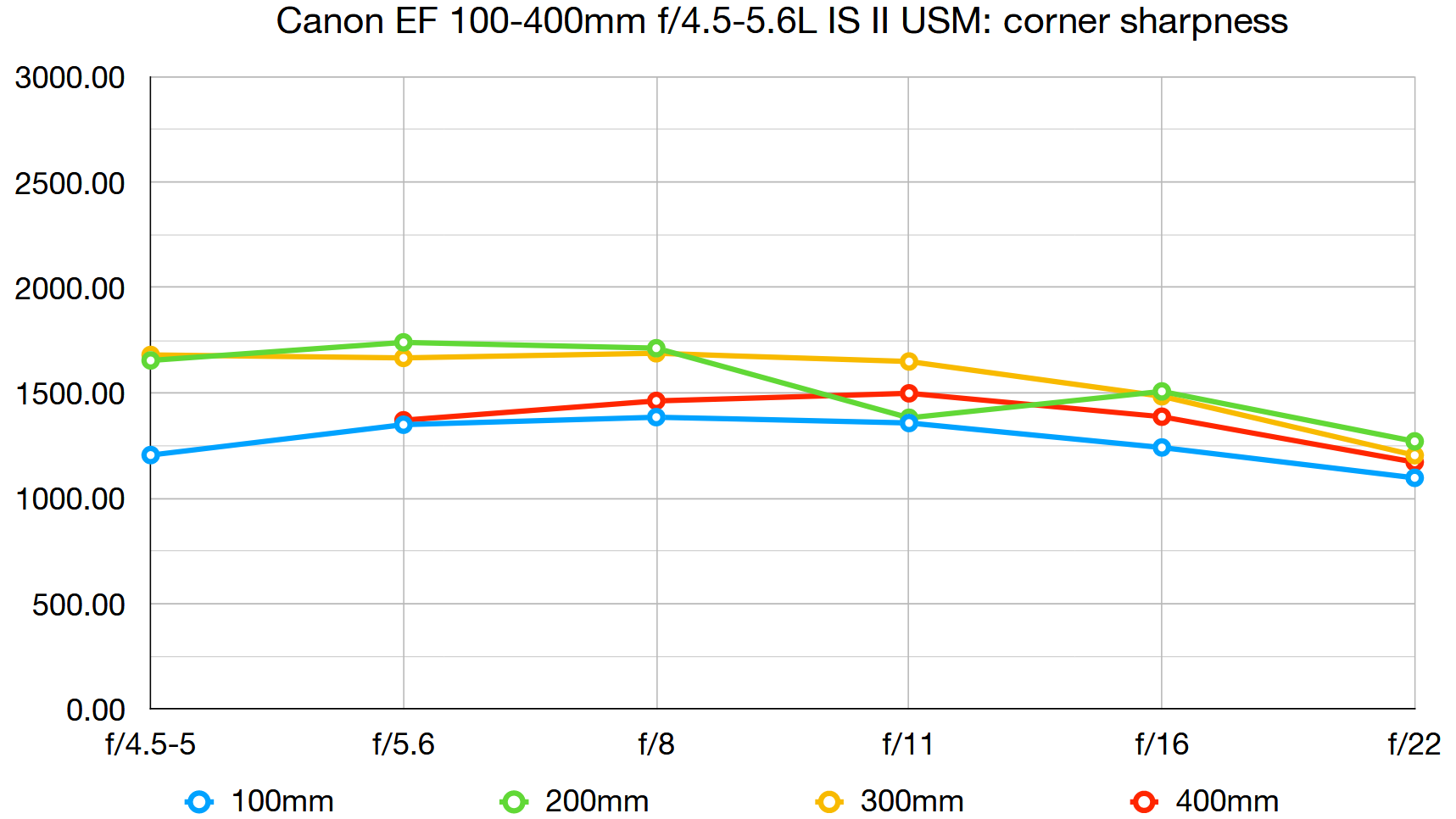
Centre-sharpness is fabulous in the short to medium section of the zoom range, especially at wide apertures which help to keep shutter speeds fast, for freezing action. It drops off a bit at the long end but is still highly respectable. Edge-sharpness is very good throughout the whole zoom range, and much better than in the more budget-friendly Sigma and Tamron 100-400mm zooms.
Fringing:
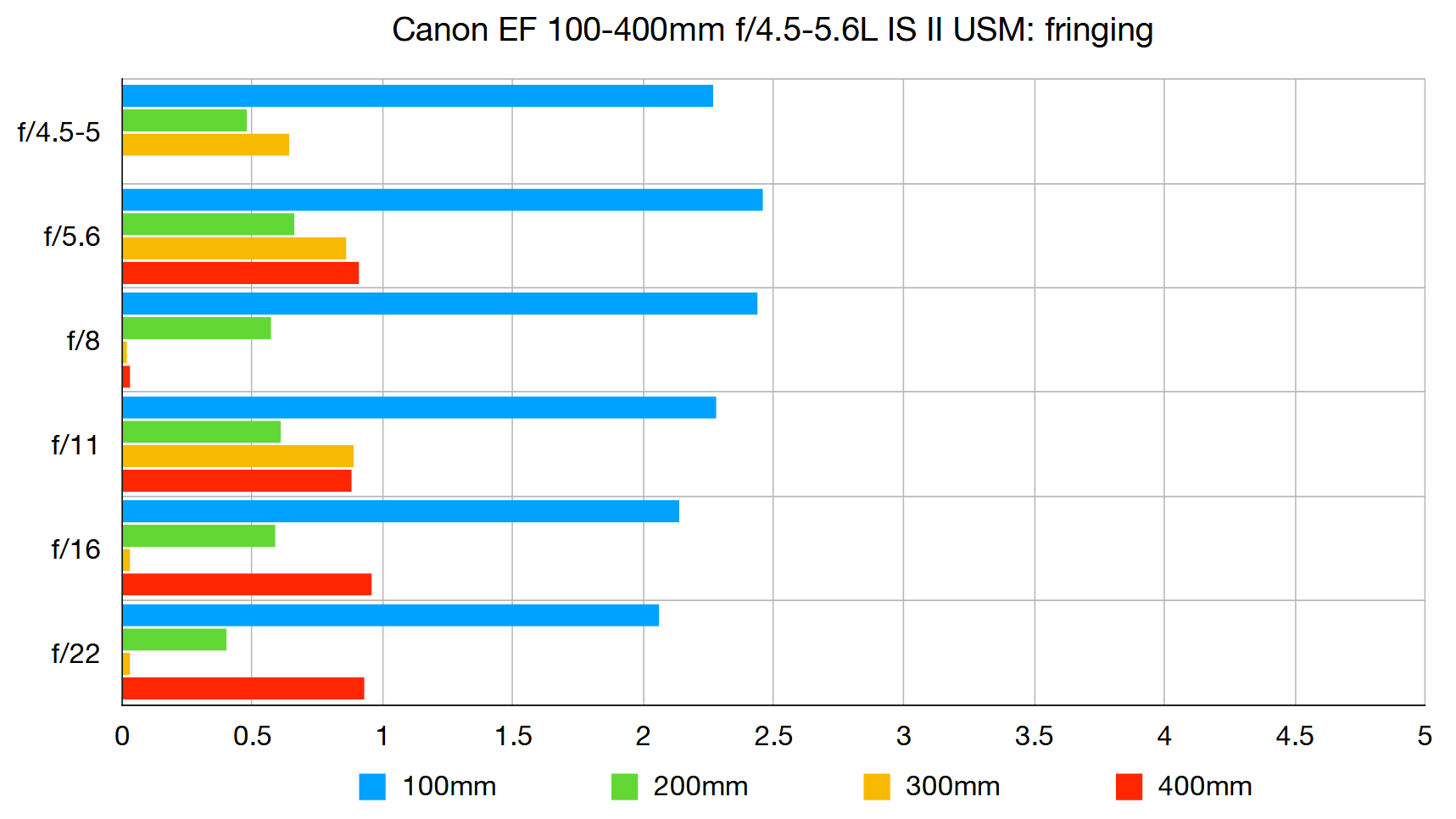
Lateral chromatic aberration can be visible at short zoom settings towards the edges of the frame, when uncorrected in-camera, but is negligible in the medium to long sector of the zoom range.
Distortion:
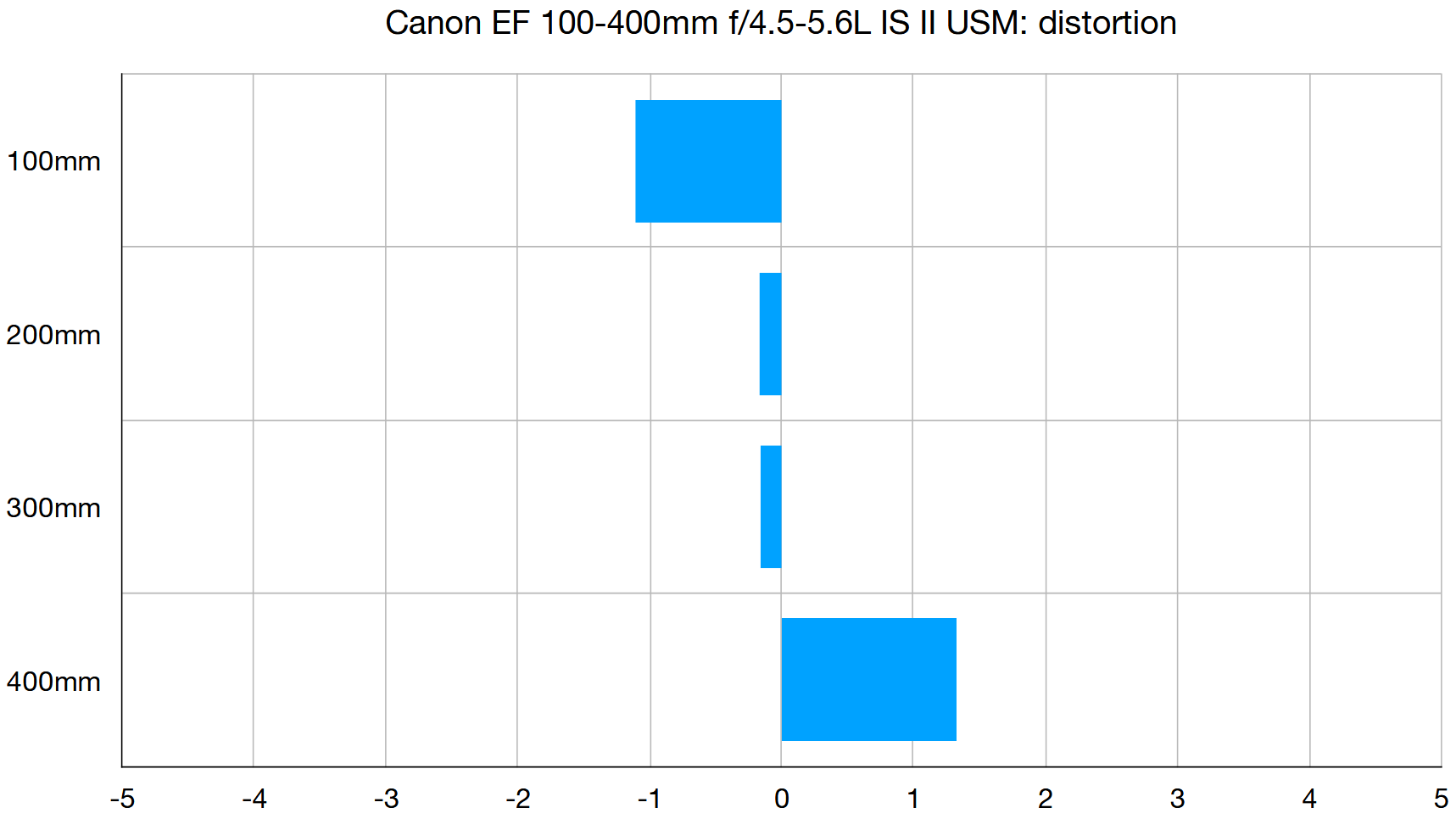
There’s a bit of barrel distortion at short zoom settings and a little pincushion at the long end but it’s fairly slight in both cases.
Verdict
Typical of Canon L-series lenses, the EF 100-400mm f/4.5-5.6L IS II USM combines pro-grade build quality and performance with a weighty price tag. It’s a very fine lens, ideally suited to action, sport and wildlife photography. But, for most of us, the Sigma 100-400mm f/5-6.3 DG OS HSM | C or Tamron 100-400mm f/4.5-6.3 Di VC USD will suffice, especially given that they're only about two-thirds the weight and less than a third of the price of the big Canon.
Read more:
Best Canon lenses
Best 100-400mm lenses
Best lens for bird photography
Best wide-angle lenses for Canon
Best Canon telephoto lenses
Matthew Richards is a photographer and journalist who has spent years using and reviewing all manner of photo gear. He is Digital Camera World's principal lens reviewer – and has tested more primes and zooms than most people have had hot dinners!
His expertise with equipment doesn’t end there, though. He is also an encyclopedia when it comes to all manner of cameras, camera holsters and bags, flashguns, tripods and heads, printers, papers and inks, and just about anything imaging-related.
In an earlier life he was a broadcast engineer at the BBC, as well as a former editor of PC Guide.
